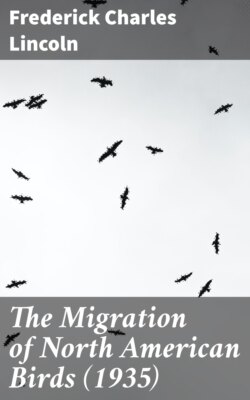Читать книгу The Migration of North American Birds (1935) - Frederick Charles Lincoln - Страница 8
На сайте Литреса книга снята с продажи.
NORTHERN ANCESTRAL HOME THEORY
ОглавлениеAccording to one of these, nonmigratory birds swarmed over the entire Northern Hemisphere in earlier ages, the conditions of food and habitat being such as to permit them to remain in their haunts throughout the year. The entire northern area then afforded the two important avian requirements—suitable breeding conditions and a year-long food supply. This is the condition today in the Tropics, and it is noteworthy that many tropical birds are nonmigratory. Gradually, however, in the Northern Hemisphere the glacial ice fields advanced southward, forcing the birds before them, until finally all bird life was concentrated in southern latitudes. As the ages passed and the ice cap gradually retreated, each spring the birds endeavored to return to their ancestral homes in the North, only to be again driven south at the approach of winter. As the size of the ice-covered area diminished, the journeys made became ever longer, until eventually the habits of migration were fixed to accord with the climatic conditions of the present age.
Thus, this theory supposes that today migratory birds follow the path of a great racial movement that took place in a distant past, associated with advances and recessions of the ice. The actions of the birds themselves lend some support to this theory, as every bird student has noted the feverish impatience with which certain species push northward in spring, sometimes advancing so rapidly upon the heels of winter as to perish in great numbers when overtaken by late storms. It is probable, however, that at that season the reproductive impulse urges the birds on to their northern breeding grounds.
